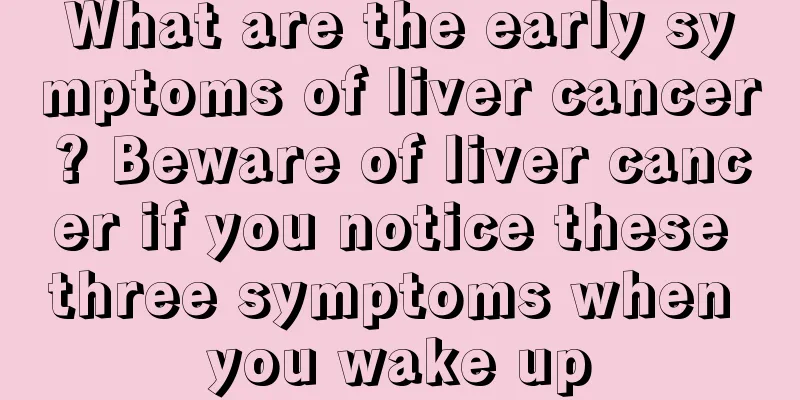Neuralgia in the buttocks

|
Neuralgia pain inside the buttocks, which is a typical symptom of sciatica. Sciatica is a problem that many people have, especially for working people who need to sit in the office for a long time. Sciatica is more common. Sciatica can be self-diagnosed through some symptoms. Below, I will introduce to you the common symptoms of sciatica! 1. General symptoms (1) The pain is mainly limited to the sciatic nerve distribution area, the posterior thigh, the posterior and lateral part of the calf, and the foot. Patients with severe pain may adopt a unique posture: bending their waist, bending their knees, and standing on their toes. If the lesion is located at the nerve root, the pain will worsen when the pressure in the spinal canal increases (coughing, straining). (2) The degree of muscle weakness can vary greatly depending on the cause, location of the lesion, and the extent of the damage. The muscles innervated by the sciatic nerve may be completely or partially weak or paralyzed. (3) There may or may not be tenderness over the sciatic nerve trunk at the sciatic notch. (4) There is a sciatic nerve traction sign, and the Lasegue sign and its equivalent sign are positive. The presence of this sign is often parallel to the severity of the pain. This symptom may disappear after local anesthesia of the sciatic nerve root or nerve trunk. (5) The Achilles tendon reflex is reduced or disappears, and the knee reflex may increase due to stimulation. 2. Sciatica It is often accompanied by various types of infections and systemic diseases, such as upper respiratory tract infections. Because the sciatic nerve is relatively superficial, sciatica is prone to occur when exposed to moisture or cold. When sciatica occurs due to systemic diseases, attention should be paid to the presence of complications such as collagen disease and diabetes. Most cases of sciatica are unilateral and not accompanied by waist or back pain. The pain is usually continuous but can also be paroxysmal. Symptoms worsen when spinal canal pressure increases and can also radiate along the sciatic nerve. There is obvious tenderness in the sciatic nerve trunk and gastrocnemius tenderness. The pain and muscle weakness are often not parallel. The pain is generally severe, while the muscle weakness is often not obvious. In the acute phase, it is difficult to judge motor function due to pain. Foot drop and atrophy of the gastrocnemius and tibialis anterior muscles may be detected. The Achilles tendon reflex is reduced or absent, but the Achilles tendon reflex may also be normal. The knee reflex is normal, and superficial sensory impairment is obvious. 3. Secondary sciatica (1) Lumbar disc herniation is the most common cause of sciatica, which often occurs at L4-L5 and L5-S1. About 1/3 of cases have a history of acute lumbar trauma. Most patients are between 20 and 40 years old. The clinical characteristics are low back pain for several weeks or months, followed by sciatica in one lower limb. In addition to the general symptoms of sciatica, physical examination also showed tension in the back muscles, limited lumbar movement, scoliosis, and tenderness of the spinous processes at the affected area. (2) Lumbar osteoarthritis: It is more common in people over 40 years old. It has a subacute to chronic onset and is often accompanied by a history of long-term low back pain. It is difficult to stand up after sitting for a long time, or to sit down after standing for a long time. Clinically, it can manifest as sciatica on one or both sides and symptoms in the lower back. (3) Congenital malformations of the lumbar sacral spine include lumbar sacralization, sacral lumbarization, and occult spina bifida. In addition to sciatica, the latter often presents with a history of enuresis. Physical examination often reveals foot deformities and abnormalities of the lumbar skin, such as a small depression behind the anus and a small hemangioma on the midline of the sacrum. This often objectively and accurately indicates the area where the vertebral lamina has not healed. (4) Sacroiliitis is commonly caused by rheumatoid or tuberculous lesions. When there is exudation and destruction of the joint capsule, it will stimulate the L4-5 nerve trunks, and some patients may have symptoms of sciatica. |
<<: What soup is good for hair loss
>>: How to preserve fresh osmanthus
Recommend
How many days does it usually take for a cold and cough to heal?
Cold is a relatively common disease, which is gen...
In addition to not using fans when you have chickenpox, what other preventive measures should you take?
If most people don't know much about how to p...
What Chinese medicine can I take to treat brain cancer
Brain tumor treatment can be surgery, radiotherap...
What is the best way to treat gallbladder polyps?
According to valid data reports, the incidence of...
Pressing the bladder feels like urinating
People always find themselves feeling the urge to...
What is the cause of the rash after moxibustion?
Moxibustion is an important treatment method in t...
Is there a high chance of hereditary gastric cancer?
The incidence of gastric cancer is very high in m...
How long can you live with advanced laryngeal cancer?
How long can one live with advanced laryngeal can...
How many days after the scraping can I wash my hair
Adults often choose to have scraping treatment du...
How to remove scale from a kettle? Collect these tips quickly
The removal of scale is a problem for many people...
The secret of not making bread hard in the oven
Many people in our daily life like to eat bread v...
The role of lactate dehydrogenase
What is lactate dehydrogenase? What do you know a...
Is the recurrence rate of skin cancer high?
Skin cancer has a wide range of symptoms, such as...
What does cin1, a precancerous lesion of the cervix, mean? Five things to note to prevent cervical cancer
In today's modernization, although medicine h...
What are the functions of snowflake powder
People who like fishing are no strangers to snowf...









